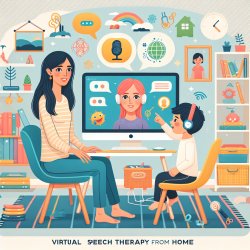Introduction
The digital landscape is rapidly evolving, and with it, the behaviors of younger demographics, including early adolescents. The study titled "Social epidemiology of online dating in U.S. early adolescents" sheds light on the prevalence and sociodemographic factors associated with online dating among early adolescents. As practitioners focused on creating great outcomes for children, understanding these trends is crucial.
Key Findings from the Study
The research analyzed data from the Adolescent Brain Cognitive Development Study, focusing on early adolescents aged 11-12. It found that 0.4% of participants reported using a dating app. Notably, males and sexual minorities were more likely to engage in online dating compared to their counterparts.
- Males: Had higher odds of online dating compared to females (AOR 2.72).
- Sexual Minority Identification: Associated with greater odds of online dating (AOR 12.97).
Implications for Practitioners
These findings highlight the importance of addressing digital literacy and sexual health education among early adolescents. Practitioners can improve their skills by considering the following:
- Incorporate Digital Literacy: Educate adolescents about the potential risks and benefits of online interactions, including privacy and safety measures.
- Focus on Sexual Health Education: Provide anticipatory guidance on online dating, particularly for males and sexual minorities, to promote healthy and safe online behaviors.
- Encourage Open Conversations: Create a safe space for adolescents to discuss their online experiences and feelings, fostering trust and understanding.
Encouraging Further Research
The study's findings also suggest avenues for further research. Understanding the long-term effects of early online dating on mental and sexual health can guide future interventions. Practitioners are encouraged to stay informed about ongoing research and contribute to the discourse on adolescent online behaviors.
Conclusion
As the digital world continues to influence adolescent development, practitioners must adapt their approaches to support healthy outcomes. By integrating the insights from this study into practice, we can better equip adolescents to navigate the complexities of online dating.
To read the original research paper, please follow this link: Social epidemiology of online dating in U.S. early adolescents.










